10 Things to Do in Alfama
Let yourself be captivated by the nooks and crannies of the city's oldest quarter.
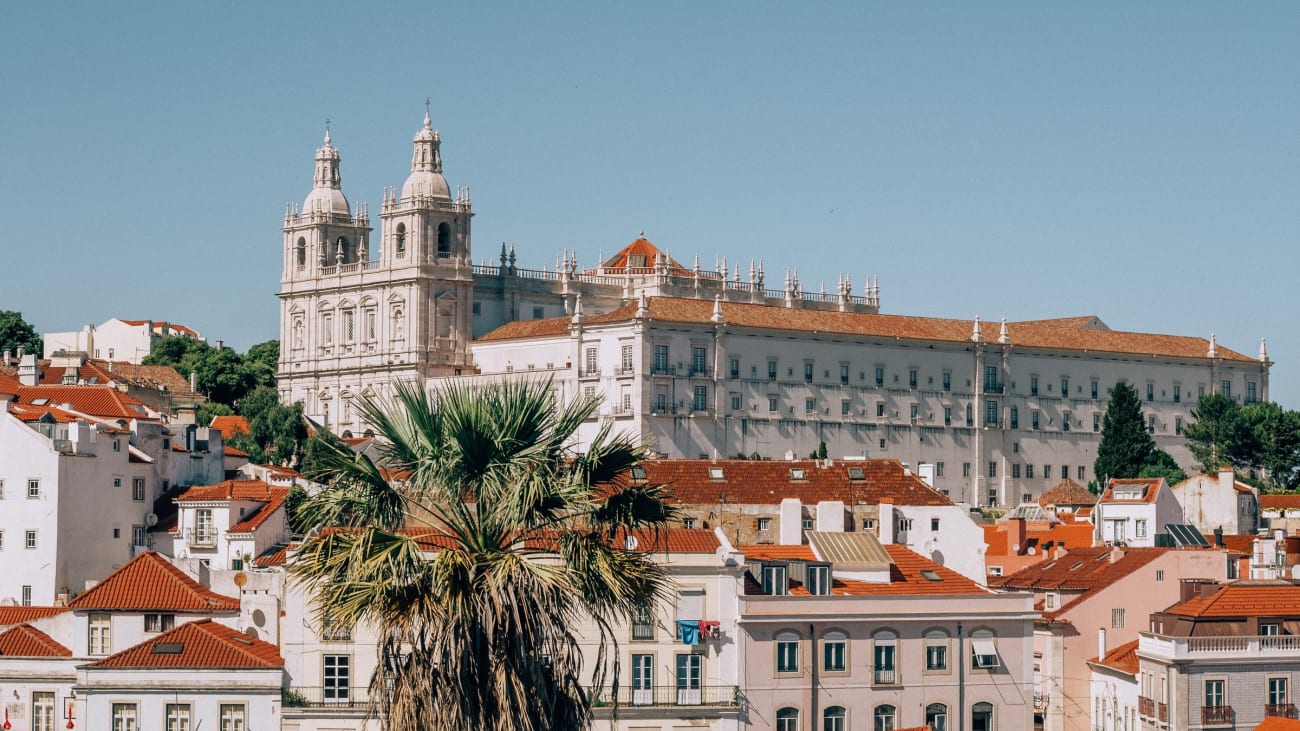
View of Alfama, Lisbon | ©Filiz Elaerts
Steep streets, viewpoints, pastel-coloured houses, trams and the melodies of fado: Alfama is Lisbon in miniature and exploring it means entering a very authentic area. Read on to find out what to see and do in this area of the Portuguese capital.
Choose a guided tour

A good way to get to know Alfama is through a guided tour. You will discover the oldest neighbourhood of the Portuguese capital with an experienced guide who will take you to the main sights of the area. These city tours of Lisbon usually last between two and three hours and touch on the district's landmarks: the Cathedral, the viewpoints and the São Jorge Castle. The tours can be conducted in English and are available in the morning and afternoon. They usually depart from a location in the district or from the central Praça do Comércio in Baixa. As for the price, it's usually around €15.
If you're short on time, this is the best option. The guides know the shortcuts and the most interesting historical attractions.
Climb the Alfama Fortress

São Jorge Castle overlooks the capital from the top of a hill. Its foundation dates back to the 8th century when the Muslims controlled much of Portugal. At that time, Lisbon was known as al-Ushbuna and was an important administrative and commercial centre. Unfortunately, between the 16th and 18th centuries it fell into decline due to the numerous earthquakes that struck the country.
Restructuring carried out between 1938 and 1944 and in the 1990s has restored the castle to some of its former glory. Today, it is one of the most visited monuments in the city and its main attraction is the incomparable view over Lisbon and the Tagus River. Take some photos and continue your walk to the Castillejo (the old Muslim citadel), the Torre do Homenage (Torre de Menagem, the largest and where the royal standard was raised) and the camera obscura, a system of lenses and mirrors that allows you to see the city at 360º and in real time.
As it is located on the top of a hill, you will have to climb Rua de Santa Cruz do Castelo, a street that leads up to an entrance to the fortress.
Enter an ancient church-turned-mausoleum

The white silhouette of Lisbon's National Pantheon (Panteão Nacional) juts out from the rooftops of Alfama. From the outside, the monumental entrance and the large dome are reminiscent of a church, and indeed, this was its original use. At the end of the 17th century, the Infanta Maria of Portugal ordered the construction of a temple to house the relics of Santa Engracia but, less than a century later, an electrical storm destroyed it. In the 19th century, the Liberal Revolution brought with it the Republic, which indicated this place as the most suitable to house the tombs of illustrious Portuguese.
It is home to such personalities as Pedro Álvares Cabral, the lady of fado Amália Rodrigues and Eusébio, the legend of Portuguese football. Another attraction of the National Pantheon is its large panoramic terrace overlooking the Alfama district. The monument is open from Tuesday to Sunday (from 10:00 to 18:00 in summer and from 10:00 to 17:00 in winter) and admission costs around €4.
If you like religious architecture, a five-minute walk from the Pantheon is the Church and Monastery of San Vicente de Fora. The church was renovated in the 16th century according to the design of Italian architect Filippo Terzi.
Visit Casa dos Bicos and immerse yourself in Saramago's works

The Casa dos Bicos was built in 1523 by Brás de Albuquerque, the son of the Indian Viceroy Afonso de Albuquerque. The Portuguese nobleman travelled to Italy and was impressed by the architecture of the Renaissance. On his return to Portugal, he ordered the construction of a residence characterised by the peaked façade and the irregular shapes of the doors and windows.
According to connoisseurs, it is inspired by the Diamond Palace in Ferrara. The building is located at Rua dos Bacalhoeiros 14 and the name of this street gives us a clue. By the 20th century, the Casa dos Bicos had lost its residential function and had been converted into a cod warehouse.
Today, it is the headquarters of the José Saramago Foundation and houses a permanent exhibition entitled "A Semente dos Frutos". The collection includes books, original manuscripts, photographs and other documents linked to or that had belonged to the writer. The museum is open Monday to Saturday from 10:00 to 18:00.
If you like archaeology, the ground floor of the Casa dos Bicos houses a number of ancient structures: part of the Fernandine wall, Roman-era tanks for preserving fish and the remains of the Islamic fence.
Enjoy the view
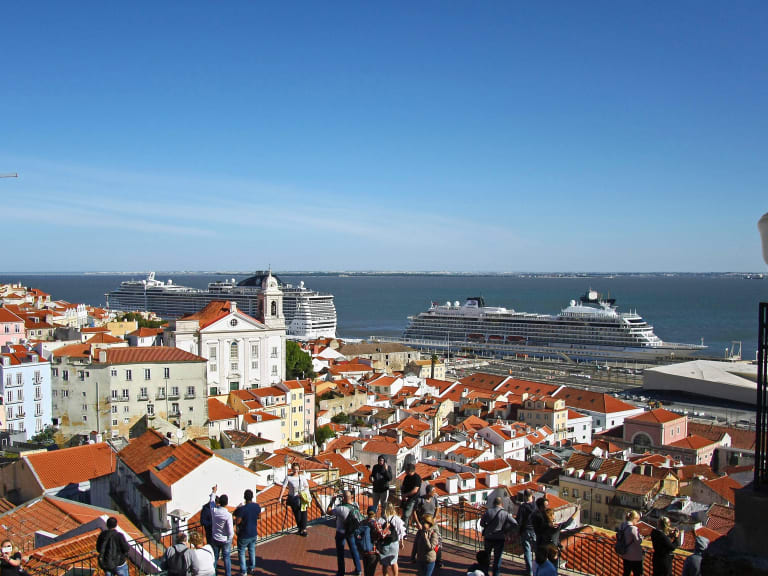
Lisbon is a city of slopes, hills and esplanades. No visit would be complete without a few stops at the panoramic viewpoints scattered throughout the capital's geography. In the Alfama district, the most beautiful and famous belvederes are essentially two:
- Mirador Portas do Sol (Largo Portas do Sol), a balcony overlooking the Igreja de São Vicente de Fora, the old town and the waters of the Tagus. It is possibly the best belvedere in the city. The famous tram 28 passes through here, which is why it is so popular with tourists. Still, it is worth a visit to enjoy the view and listen to the street musicians.
- A short distance away you will also find the Mirador de Santa Luzia (Largo Santa Luzia). The viewpoint has two floors and is decorated with a canopy of bougainvillea, columns and tiles. From here you can see the churches of St. Michael and St. Stephen, the dome of the National Pantheon and the Alfama district. The place is frequented by painters and craftsmen selling their wares.
Mateo's tip
If you are staying near the Portas do Sol viewpoint and you don't mind getting up early, I recommend going to the viewpoint early in the morning. It is the best place to see the sunrise.
Taste the Lusitanian delicacies
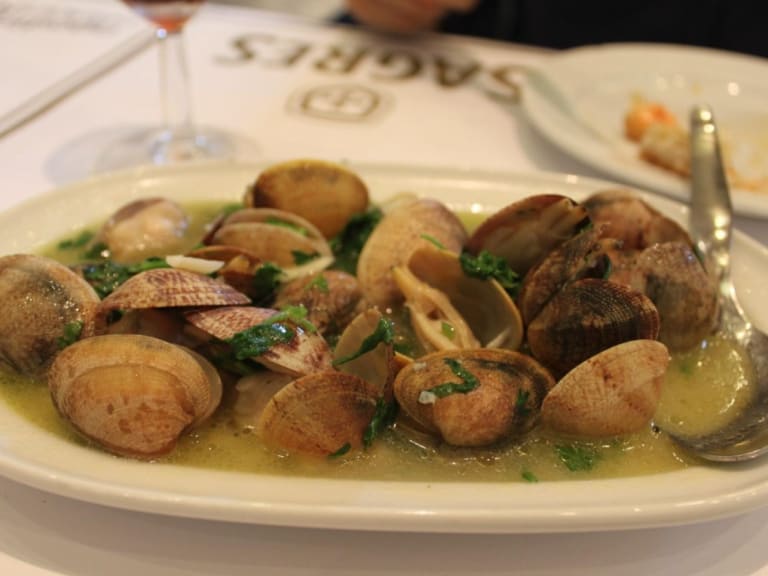
After a long walk, you need to recharge your batteries and sit down for a bite to eat. In Alfama there is no shortage of options, as its narrow streets hide a number of establishments offering traditional recipes at an affordable price. Read on and find out where it's worth stopping off without spending an arm and a leg:
- Cervejaria Ramiro, a neighbourhood classic. Despite its name, it is one of the best fish and seafood restaurants in the city (Avenida Almirante Reis 1).
- Le Petit Café, a restaurant halfway between the cathedral and the castle. Its menu offers a wide selection of fish. If you want to try their speciality, I recommend ordering an octopus dish (Largo São Martinho).
- O Beco, an establishment known for its bacalhau à Brás. Sit at their tables and enjoy the abundant portions (Beco do Espírito Santo 9).
- Almargem, a simple and cheap tavern a stone's throw from the cathedral (Travessa do Almargem, 4).
If you're looking for a vegetarian restaurant, Princesa do Castelo (Rua do Salvador 64A) serves vegan, vegetarian, and macrobiotic dishes. Another option is The Food Temple on Beco do Jasmim 18.
Find a different souvenir

Every Tuesday and Saturday, the Campo de Santa Clara hosts the city's most typical flea market: the Feira da Ladra. As you can guess, in the past it was the place where stolen goods were sold, while nowadays it hosts a good number of local vendors and artisans. Here you can buy new and second-hand clothes, vinyls, second-hand books, ceramics, costume jewellery, tiles, old cameras and much more. It's worth strolling through the stalls to pick up an original souvenir. The Feira da Ladra dates back to the Middle Ages and is a must in the Portuguese capital.
After some shopping, you can relax for a while in the nearby Jardim Botto Machado, a green area much appreciated by the locals. Here you will find Clara Clara, a café with a terrace shaded by a hibiscus tree.
Try the famous pastéis de Belém in Santo António
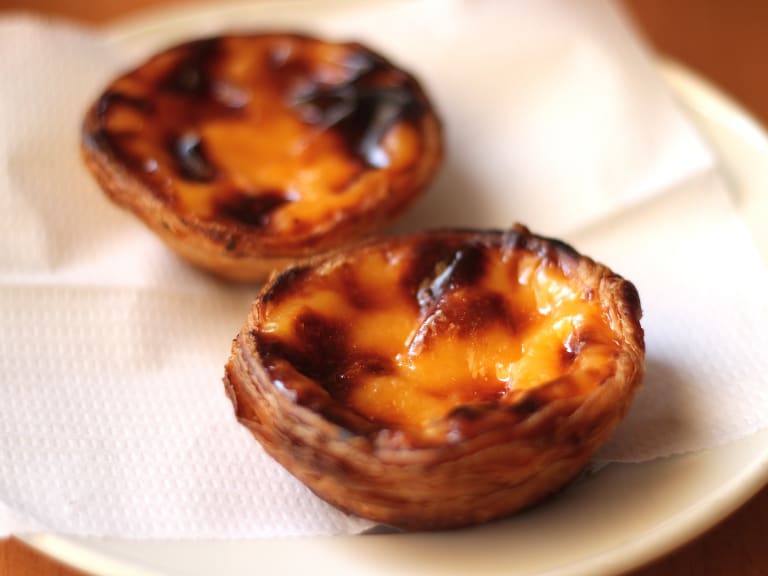
The history of pastéis de nata is linked to the history of Lisbon. It all started in 1820, the year of the Liberal Revolution. In that year, the bourgeoisie, dissatisfied with the situation in the country, forced the king to return to Portugal and return Brazil to the status of a colony. In this convulsive situation, the religious orders began to suffer many closures and the friars of the Hieronymites Monastery (among others) stopped receiving funds. To alleviate the crisis, the monks began to sell egg yolk-based desserts outside the sacred place.
These desserts were so successful that the original recipe was acquired in 1837 by the Fábrica de Pasteles de Belém, one of the best known establishments in the Portuguese capital.
However, the best confectionery is to be found in the Alfama district. Pastelería Santo António seems to have found the perfect formula for mixing milk, sugar, vanilla and egg yolks. The pastry won the competition for the best pastel de nata in Lisbon in 2019, promoted by the Peixe em Lisboa gastronomic festival.
Mateo's tip
Pastéis de Belém are a perfect gift for family and friends. If you're travelling around Christmas, you can also come home with a bolo rainha, the Portuguese king cake. At the famous Confeitaria Nacional you'll find a vast assortment of typical desserts.
Take tram 28

In addition to the free tour, another way to get around the neighbourhood is by tram 28. To take this means of transport, you should go to Praça Martim Moniz, a square in Baixa. After leaving the flat part of the city, the convoy climbs the steep streets of the capital and touches the main monuments of Alfama: the cathedral, the viewpoints and the castle. The journey ends at Campo Ourique station in the Bairro Alto. As for the duration, it can vary depending on the time of day and traffic. Normally, the full journey takes about 50 minutes.
A single ticket costs about €2.90. If you plan to take it on more than one occasion, I recommend choosing a daily ticket, which costs around €6.15. In any case, be careful. As it is frequented by tourists, you may come across pickpockets.
Finish the tour in a Fado tavern
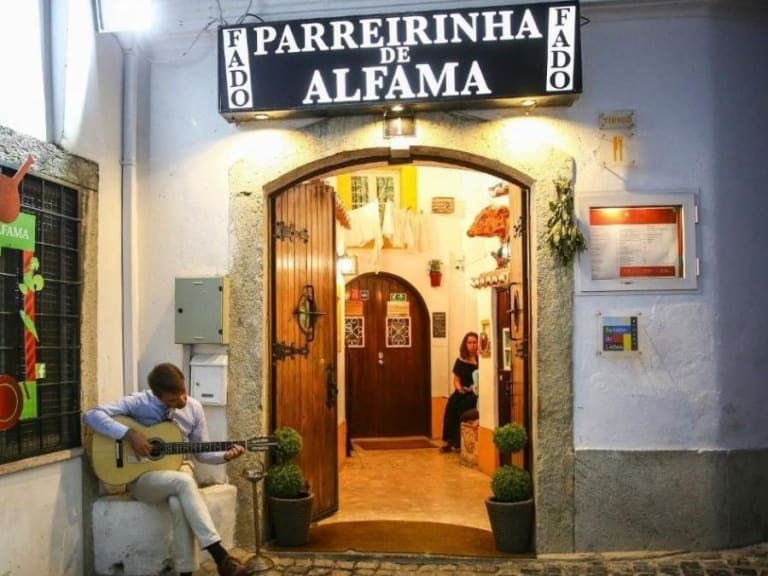
Alfama is one of Lisbon's oldest neighbourhoods. This is where the real Lisboners live and its alleys are a favourite place to listen to Fado. Some believe the genre derives from the melancholic chants of the Muslims after the Christian reconquest, others believe it comes from contamination with Brazilian music. What is certain is that fado is synonymous with Portugal and the best bars that offer it are in Alfama.
One of these is Parreirinha de Alfama (Beco do Espírito Santo 1), an establishment that owes its fortune to Argentina Santos, one of the most talented singers of her time. In the 1950s, the artist put this bar on the map thanks to her legendary performances and collaborations with singers of the calibre of Berta Cardoso, Alfredo Marceneiro and Celeste Rodrigues.
Another bar with a long tradition and a good number of positive reviews is Clube de Fado (Rua S. João Praça 86), a historic venue just a stone's throw from Lisbon Cathedral. For an even more authentic experience you can opt for A viela do Fado, a tiny place at Rua dos Remédios 111. If you want to eat while enjoying live music, I recommend you to read the post Fado Dinner in Lisbon: the best options.
Beware of the small snacks served by the waiters. They are not included in the price and are charged separately.
